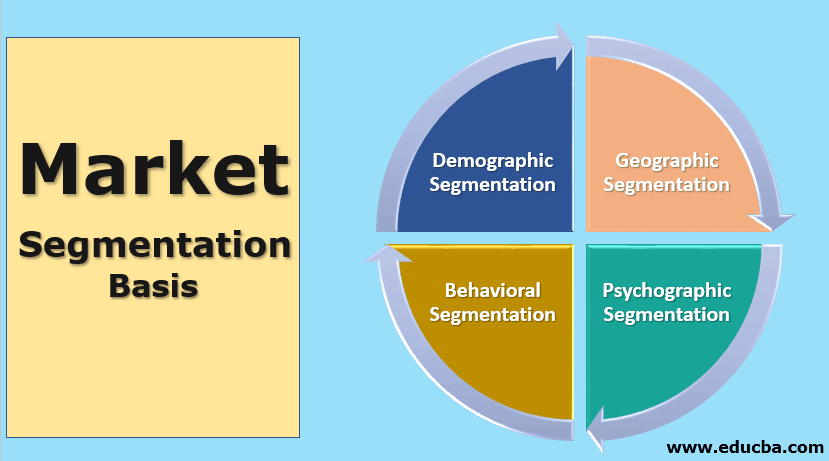Consumer markets can be segmented through a single variable or a combination of variables. However, it should be noted that the segmentation of consumer markets varies from company to company and product to product. The general segment variables are as follows:
1. Geographic Segmentation
Geographic segmentation entails dividing a market into different geographic units such as nations, states, regions, counties, cities, etc. A company may decide to operate in one or a few geographical areas, or to operate in all areas, but pay attention to geographical differences in needs and wants.
Examples of companies who segment their market using geographical segmentation include Nigeria Bottling Company Plc., Seven-up Company, Unilever Nigeria plc, NNPC, etc.
Many companies today are “regionalising” their marketing program socialising their products, advertising, promotion and sales efforts to fit the needs of individual regions, cities, etc.
2. Demographic Segmentation
Demographic segmentation consists of dividing the market into groups based on variables such as age, gender, family size, family life cycle, income, occupation, education, religion, race, and nationality.
Demographic factors are the most popular bases for segmenting customer groups. Besides, demographic variables are easier to measure than most other types of variables. Even when market segments are defined using other bases, such as personality or behavior, their demographic characteristics must be known to assess the size of the target market and to reach it efficiently.
For example, some companies use age and life-cycle segmentation, offering different products or using life-cycle groups. For instance, pharmaceutical enterprises have different products (drugs) for different ages.
Also, manufacturers of clothing materials use this variable as a basis for segmenting their markets into baby clothes, boys’ and girls’ clothes, youth clothes, and adult clothes to facilitate selling activities and to serve them efficiently.
Read Also: What is the Stock Market and How Does It Work?
Gender segmentation has long been used in the clothing and cosmetics section. Men’s dresses are quite different from women’s dresses in Africa, and in Nigeria in particular. Although these days, due to western culture; a woman also uses men’s dresses. However, hairdressing and cosmetics, are purely dominated by women.
Those who operate in the entertainment industry also use gender mutation as a way of segmenting the market, to ensure efficiency. Income segmentation, however, has long been used by the marketer of products such as automobiles, clothing, cosmetics, jewelry, wristwatches, etc.

Many companies target different consumers with luxury goods and convenience services. For example in the aviation industry where airlines such as Arik, Bellview, British Airways chanchangi, etc., operate, passengers are classified into –first class, second class, and third class, respectively. This is based on the amount of money paid by passengers.
In the hospitality industry, income segmentation is one way of serving customers. The amount of money paid by guests determines the facilities to enjoy.
Since income varies from person to person, and from industry to industry, markets use income segmentation as a way of identifying consumers’ needs to make provisions, accordingly.
3. Psychographic Segmentation
Psychographic segmentation means dividing buyers into different groups based on social class, lifestyle, or personality; people in the same demographic groups can have different psychographic makeup. Social class, on the other hand, influences the types of goods and services consumed.
Abraham Maslow classified human beings into various classes, using needs as a basis. For example, rich men who live in big cities such as Abuja and Lagos reside in Maitama, Asokoro, VGC, or Lekki, respectively.
These places are designated as rich men’s places; likewise, rich men prefer going to supermarkets to shop for their goods, rather than visiting open markets. These places are considered high-class for rich men.
All the classifications serve as ways of locating, the target consumers and producing goods and services to satisfy their needs. For example, 5-star hotels are located in Lekki, VGC (Lagos), Asokoro, and Maitama (Abuja) just because of the people who are residing over there. Social classes are groups whose members share similar values interests and behaviors.
Read Also: Marketing Management Philosophies and Concepts
a) Lifestyle – People coming from the same sub-cultural social class and occupation may have quite different lifestyles. Lifestyle is a person’s pattern of living as expressed in his or her activities, interests, and opinions.
Lifestyle captures something more than the person’s social class or personality.
Marketers are, increasingly, segmenting their markets by consumers’ lifestyles. For example, cosmetics and clothing sellers used social class and lifestyles as a way of segmenting markets.
In addition, some magazines and newspapers are designed to capture particular markets such as sports, music, etc. Lifestyle classifications are by no means universal; they can vary, significantly, from country to country.
The lifestyle concept, when used carefully, can help the marketing expert to understand changing consumer values and how they affect buying behavior.
b) Personality- Each person’s distinct personality influences his or her buying behavior. Personality refers to the unique psychological characteristics and lasting responses that lead to, relatively, consistent and lasting responses to one’s environment.
Personality is, usually, described in terms of traits, such as self-confidence, dominance, interaction, autonomy, defensiveness, adaptability, and aggressiveness. Personality can be useful in analyzing consumer behavior for a certain product or brand choices.
Marketing executives use personality variables to segment markets, giving their products personalities that correspond to consumers’ expectations. Some of the products sold using personality strategies include cosmetics, automobiles, liquor, clothing, wristwatches, neck-lace, houses, etc.
4. Behavioral Segmentation
Behavioral segmentation implies dividing buyers into groups based on their knowledge, attitude, uses, or responses to a product.
Some marketing executives are of the view that behavioral variables are the best starting point for building market segments.
Variables such as occasions, benefits sought, status, usage rate, loyalty status, and attitude toward products- among others, are used by marketers to segment markets.
Read Also: The Role of Marketing in Business
